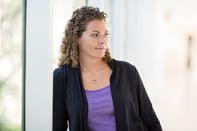Published on
Relationships = Retention: Embracing Non-Traditional Students on College Campuses (Part 2)

Support for all students is most effective when it’s anchored by caring, mentoring relationships. Students feel better about engaging with their education (and generally have better academic outcomes) when they perceive others to be invested in their success.[1] Especially on large campuses, it’s important that faculty reinforce for students that they’ve been noticed and that, with effort, they can succeed. In order to better support and retain adult students who are coming back to campus, college administrators and faculty should provide a variety of ways to connect with faculty outside of class. This may mean small structural changes such as ensuring faculty are available before and after class, sponsoring social events that faculty attend or making sure all students have at least one smaller course early in their education program, providing them the opportunity to connect one-on-one with the instructor. Because older students with more life responsibilities have tight schedules and may be taking evening and weekend classes, particular attention needs to be given to the timing of when activities are offered. Having affordable child care available during class hours and beyond can allow parents the freedom and flexibility to spend more time engaging with educational opportunities and activities on campus.[2]
In addition to providing opportunities to build relationships, creating easy connections between faculty and student support professionals can improve the ability of a support team to intervene with struggling students in proactive ways when they encounter challenges instead of doing damage control retroactively after they fail a course. Early warning systems are one way to do this. Faculty can alert the advising team when a student misses class or assignments or fails a critical test so that advising teams can reach out to students to connect them with resources, whether those are academic resources located in the student success center or community resources to help with issues such as transportation and child care, which so often present the largest obstacles to an adult student.
Retention — whether or not a student continues to enroll in courses and remain on track for graduation — is generally considered a student decision. Campuses leave it to students to decide to continue their coursework each term and re-enroll in the next term. However, students make their retention decisions within the context of the college program they’re attending. This means there are ways we can nudge students toward a decision to continue rather than step out. One way is to create clear pathways to obtaining a credential or degree. Another way is to offer acceleration programs to catch up on math and reading. Recent research demonstrated the power of text messaging to reduce the summer melt for college freshman.[3] It’s likely that similar methods can increase retention and, ultimately, completion for students who are pursuing their education alongside other responsibilities. Reaching out with a phone call or a text to let a student know someone has noticed they haven’t yet registered for a term is a powerful yet simple way to remind a student he or she is part of the campus community. Inspiration for new ways to connect with students and provide a supportive, rigorous and engaging education and campus experience lies both within the many colleges across the country doing this work and among the students themselves. As these non-traditional students continue to bring new skills, strengths and experiences to the classroom, colleges will do well embrace the diversity of their students and provide the support necessary to allow them to reach their goals.
– – – –
References
[1] Kuh, G. D., Kinzie, J., Schuh, J. H., & Whitt, E. J. (2010). Student success in college, (Includes New Preface and Epilogue): Creating Conditions That Matter (1st ed.). Jossey-Bass and Tinto, V. (1975). Dropout from higher education: A theoretical synthesis of recent research. Review of Educational Research, 45(1), 89–125.
[2] St. Rose, A., & Hill, C. (2013). Women in community colleges: Access to Success. Washington D.C.: AAUW. http://www.aauw.org/resource/women-in-community-colleges/
[3] See the Strategic Data Project: www.gse.harvard.edu/sdp/summermelt



